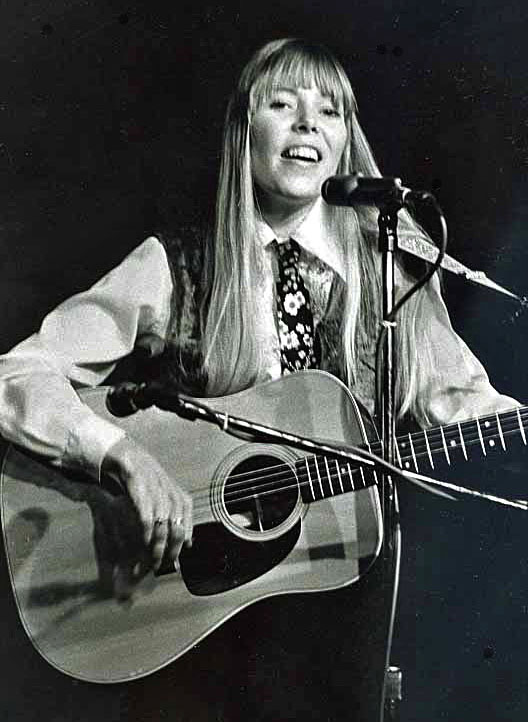
Musical voices from the past live on in the present with the recent discovery of a treasure trove of historic recordings made in Ann Arbor during the 1960s.
The nonprofit Michigan History Project discovered the 7-inch reel-to-reel audiotapes, which include a series of concerts by Joni Mitchell from 1968; a performance by Neil Young from that same year; and shows by other folk, blues, and bluegrass artists. The organization is looking for a record label to release the recordings.
“We learned of the existence of the tapes about six years ago,” says Alan Glenn, president of the Michigan History Project, which is also compiling a comprehensive history of Ann Arbor during the 1960s. “They were in the possession of a private collector. Then they disappeared, and we were afraid they were gone for good.” But the recordings resurfaced earlier this year. “Now our first priority will be to get them transferred to a digital format,” says Glenn, “then make sure that the original analog tapes are safely archived.”
The professional-quality recordings were made at Canterbury House, then and now home to the Episcopal student ministry at the University. In the ’60s, Canterbury House was an inclusive place of worship that also served as a countercultural nexus and hip music venue where top-name folk and blues acts would play.
Glenn says the recordings were made with the full knowledge and consent of the artists. “The tape machines were in plain sight and had been purchased by Canterbury. Student volunteers were usually sitting at the controls.”
Mastering engineer Chris Goosman, owner of Baseline Audio Labs in Ann Arbor, says that the quality of the recordings is exceptional. “As an archivist, I deal with all sorts of tapes of varying quality and condition. These from Canterbury House aren’t audience-recorded bootlegs but first-rate soundboard captures made on professional equipment. It’s an amazing collection with the rare combination of being well-recorded and also well-preserved, and that makes it even more historically significant.”

The Canterbury House concerts lasted from 1965 to 1971 and included more than 150 different acts. Most of the shows were recorded, but very few recordings are still resident at the ministry. The Michigan History Project is actively seeking the lost tapes of artists including Gordon Lightfoot, Janis Ian, Frank Zappa and the Mothers of Invention, Tom Rush, Buddy Guy, Roosevelt Sykes, Richie Havens, Jesse Fuller, Jim and Jean, Ramblin’ Jack Elliot, Doc Boggs, John Micaleff, Jeremy and the Satyrs, Skip James, Sun Ra, and Little Feat, among others.
If you know of the existence of any recordings, contact the Michigan History Project.
Concerts at Canterbury House in the 1960s were usually held on Friday and Saturday nights, and occasionally that week’s musical guest or a visiting celebrity—such as Joan Baez, Jim Kweskin, Commander Cody, and the San Francisco Mime Troupe—would participate in the Sunday Mass.

In 1965, when the concert series began, the head chaplains at Canterbury House were the Revs. Daniel Burke and Martin Bell. “They were probably the two coolest people I knew,” recalls Ed Reynolds, student manager at Canterbury from 1965 to 1968.
Soon Burke and Bell were joined by the Rev. Craig Hammond, a recent divinity school graduate who easily stepped into the role of Ann Arbor’s resident hippie priest. Hammond helped push the boundaries to where Sunday services at Canterbury House were likely to include beat poetry, performance art, experimental films, sermons against the Vietnam War, and the congregation singing rock songs like “Hey Jude” instead of traditional hymns.
“Canterbury was totally in keeping with the moment, with the times,” says Hammond. “It was a cultural, spiritual, and political force in a community that had come alive. It was exciting, it was dynamic, and never the same from one day to the next.”





